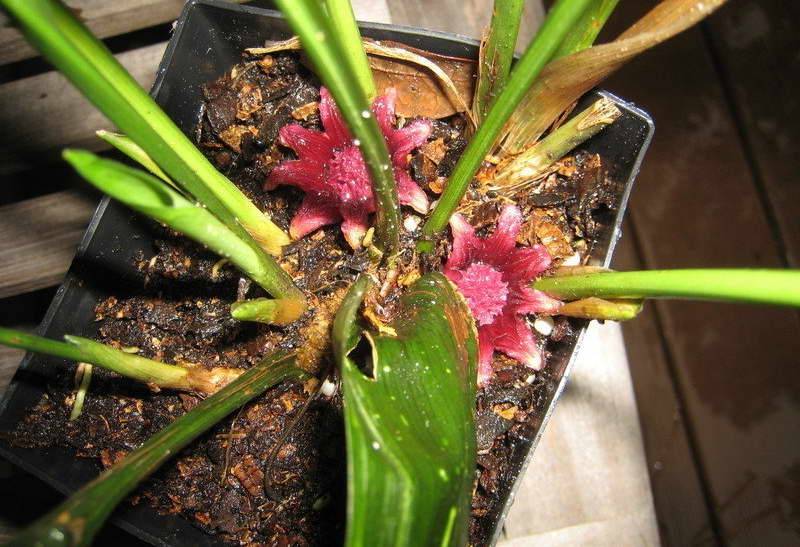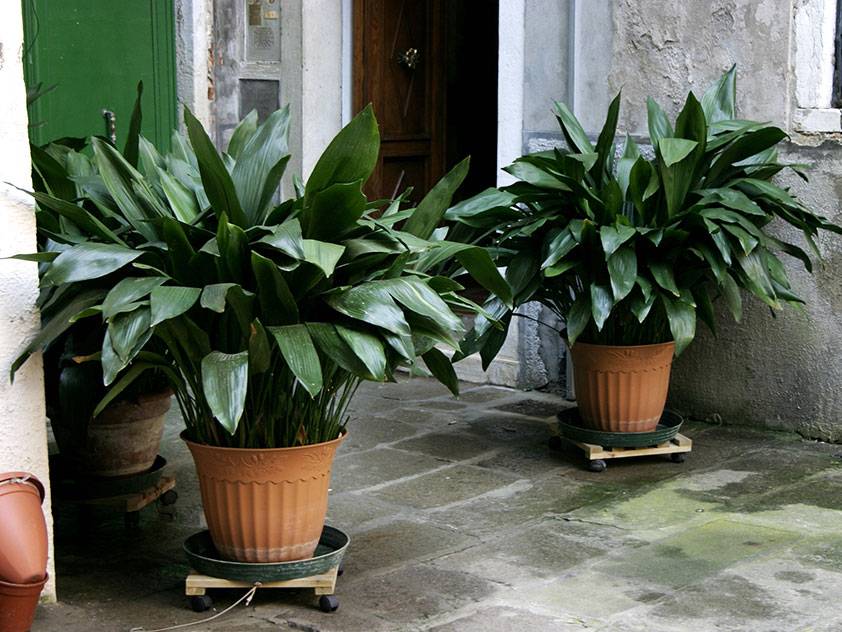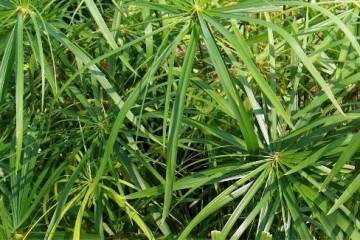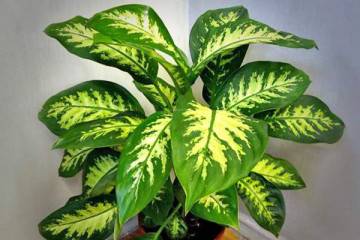Aspidistra flower - home care
Content:
Aspidistra is a perennial plant native to the tropics of East Asia. At home, it is grown as an ornamental deciduous bush, but few people know that it is capable of blooming. This happens very rarely and quickly, literally in one day.
What does an aspidistra look like, what kind of flower is it?
Aspidistra (Aspidistra) until 2009 belonged to the Liliaceae family, but recent studies of the origin have shown that, according to its characteristics, it is more correct to classify the bush as part of the Aspargus family.
You can learn how an aspidistra looks like from the description of the bush. In this case, the foliage of the plant, depending on the variety, has a different color. Moreover, there are variegated plant varieties, the leaves of which have certain patterns of different colors.
The bush itself is 70 centimeters long and has creeping rhizomes. Aspidistra has practically no stems, since the leaves grow right at the roots. Large fleshy leaf plates have a wide xiphoid shape.
Common varieties
The most popular varieties and species of aspidistra in Russian latitudes are:
- Aspidistra Milky Way. Has an unusual color of leaf plates - small white spots on the dark green surface of the leaves.
- Aspidistra Attenuat. Variegated bush with pink-green flowers.
- Aspidistra high or Elatior. The most popular variety, with erect leaves of a solid dark green hue. In appearance, the bush looks like a lily of the valley.
Aspidistra - home care
The flower has been cultivated at home for two centuries. All growers know that caring for aspidistras is easy and does not take much time. If you perform all the necessary actions in a timely manner, you can personally observe every season that aspidistra is capable of blooming with extremely unusual flowers.
Temperature
In the active period, it grows well at low temperatures up to 15 degrees. However, sharp jumps and lowering of the temperature regime below 10 degrees should not be allowed.
In general, this houseplant takes root well in an ordinary apartment.
Lighting
The plant is not particularly picky about lighting. In indoor conditions, it can grow easily and in poor light.
Watering
Aspidistra is a flower that does not like waterlogged soil. It is enough to water the soil when its surface dries up. In the spring-summer period, watering is carried out 2-3 times a week, in the autumn-winter period - once every 7 days.
To prevent stagnation of moisture in the soil and roots, you need to take care of drainage in advance. If this is not possible, then it is recommended to carefully loosen the soil, at least once a month.
Spraying
Spraying is necessary in the summer or when the indoor temperature rises above 20 degrees.
Also, the procedure will help rid large sheets of aspidistra from accumulated dirt and dust.
Humidity
Indoor humidity is very important for the fleshy ornamental leaves of the plant. Its indicators must exceed 60%, otherwise the foliage will begin to fade and lose its brightness.
Spraying and a pan of water will help to deal with the problem of dryness in the room where the flower is growing. If funds permit, you can purchase special humidifiers.
Priming
The aspidistra plant can grow normally in ordinary soil, which is collected from the garden plot. But it is best to plant it in a special substrate of sod land, compost, humus and river sand.
Top dressing
For the normal development of the bush, 3-4 dressings per season are enough. The first is carried out in the spring with organic matter or mineral fertilizers. The second time the flower is fed in the summer before flowering. You can fertilize again at the end of summer. The last procedure is carried out before retirement.
Features of care in winter, dormant period
Small changes take place in winter care, since at this time the plant retires.
During this period, the temperature is gradually lowered to 15 degrees. Watering is also gradually reduced to 1 procedure per week. Top dressing is stopped altogether to give the flower a rest, gain strength and bloom for the next season.
When and how it blooms
Few know how the aspidistra blooms, since the flower rarely pleases the owners with this event.
Flowers are on the roots of the plant and bloom for only 1 day. The buds are shaped like small stars and bells of a dark red-purple hue.
As a rule, the owners note another unique ability of the plant under the name of aspidistra - flowering can occur at any time: early spring, summer and even winter.
How aspidistra reproduces
At home, the aspidistra is propagated by dividing the bush. This is a very quick and easy way with a high probability of plant survival.
Reproduction is carried out according to the following algorithm:
- In the spring, a healthy bush is removed from the container and divided into several identical parts along with the rhizome. Each cut should contain about 5 leaves.
- Then all parts of the separated bush are transplanted into separate pots.
- Water thoroughly and put in a lighted place.
Transfer
Transplanting a bush is often not recommended, as it has a very fragile root system. It is done once every 3-4 years.
An indication for transplantation is also a severe pest infestation or a serious disease. The transplant is carried out in early spring in a larger pot.
The bottom of the container is covered with drainage material, then it is filled with a third of the substrate. The bush is placed on top and covered with the remaining soil mixture. The main thing is not to leave voids and thoroughly tamp the earth.
Diseases and pests
Most often, aspidistra gets sick with infectious chlorosis and root rot. With chlorosis, the leaves begin to turn yellow. Rot appears due to hypothermia of the bush and excessive watering. The roots of the flower begin to rot and die off, the bush loses its beauty, its growth stops.
Of the pests, the bush affects the spider mite, which feeds on juicy leaf plates and weaves a thin web. To combat this parasite, acaricides are used.
An unusually flowering aspidistra plant boasts a long history, caring for a flower at home is quite simple - even novice lovers of indoor plants can handle it. Previously, it was grown only in wealthy houses, it personified wealth. The plant still does not lose its popularity. Aspidistra greens are often used in floristry when decorating bouquets, because the flower is valued primarily for the beauty of the leaves.




















